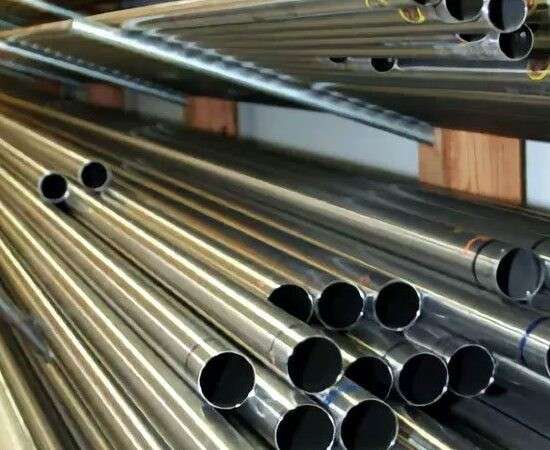


Explore Stainless Steel 316L Welded Pipes, their chemical composition, properties, manufacturing process, and applications in chemical, marine, oil & gas
In the field of piping and tubing systems, material selection is a crucial factor that determines the safety, durability, and efficiency of operations. Among the most widely used materials, Stainless Steel 316L Welded Pipes stand out as a premium choice due to their exceptional corrosion resistance, mechanical strength, and suitability for harsh environments.
These pipes are manufactured by welding strips or plates of 316L stainless steel, producing a cost-effective yet high-performance solution for a wide variety of industrial applications. With their compliance to global standards such as ASTM A312 and ASME SA312, Stainless Steel 316L Welded Pipes have become indispensable in chemical processing, petrochemical, food processing, and pharmaceutical sectors.
Stainless Steel 316L is the low-carbon variant of the 316 grade, offering improved resistance to sensitisation during welding and high-temperature operations. Its typical chemical composition is as follows:
Chromium (Cr): 16.0 – 18.0%
Nickel (Ni): 10.0 – 14.0%
Molybdenum (Mo): 2.0 – 3.0%
Carbon (C): 0.03% maximum
Manganese (Mn): 2.0% maximum
Silicon (Si): 0.75% maximum
Phosphorus (P): 0.045% maximum
Sulphur (S): 0.03% maximum
Iron (Fe): Balance
The addition of molybdenum provides excellent resistance to pitting and crevice corrosion in chloride-rich environments, while the low carbon content improves weldability.
Corrosion Resistance
Excellent resistance to chloride corrosion, seawater, and acidic media such as acetic, formic, and sulfuric acids.
High Strength
Tensile strength of around 485 MPa and yield strength of 170 MPa make these pipes suitable for medium to high-pressure applications.
Weldability
Reduced carbon content prevents carbide precipitation, making 316L ideal for welding without post-weld annealing.
Temperature Tolerance
Performs well across a wide temperature range, from cryogenic service to approximately 870°C in intermittent service.
Hygienic Properties
Smooth internal surfaces ensure no contamination, making them suitable for sanitary and food-grade applications.
The production of welded pipes ensures precision, cost-effectiveness, and compliance with dimensional standards. The process involves:
Selection of Raw Material: Stainless steel plates or coils of grade 316L.
Forming: Plates are rolled into cylindrical shapes using forming machines.
Welding: Longitudinal seam welding is performed using TIG or laser welding techniques.
Heat Treatment: Pipes undergo annealing to relieve stresses and restore corrosion resistance.
Finishing: Pipes are pickled, polished, and sometimes given a passivation treatment.
Testing: Each pipe undergoes hydrostatic testing, eddy current testing, and ultrasonic testing to ensure structural integrity.
Stainless Steel 316L Welded Pipes are supplied according to international specifications, ensuring global acceptability.
ASTM A312 / ASME SA312 – Seamless and welded austenitic stainless steel pipes
DIN 17457 – Welded circular stainless steel tubes
EN 10217-7 – Welded pipes for pressure purposes
ISO 1127 – Stainless steel tubes – dimensions, tolerances, and weights
Available forms include:
Welded Round Pipes
Welded Square Pipes
Welded Rectangular Pipes
Custom-fabricated welded piping systems
Typical mechanical properties of Stainless Steel 316L Welded Pipes include:
Tensile Strength: 485 MPa (min)
Yield Strength (0.2% offset): 170 MPa (min)
Elongation: 40% (min)
Hardness: 217 HB max
These values ensure the pipes can withstand demanding pressure and mechanical stress.
Due to their superior properties, these pipes are used in a wide spectrum of industries:
Handling corrosive fluids, acids, and alkalis in reactors, piping systems, and heat exchangers.
Shipbuilding, desalination plants, and seawater handling systems rely on 316L for its chloride resistance.
Used in processing plants, brewing systems, and dairy pipelines due to hygienic properties.
Sterile fluid transfer lines, cleanroom piping, and medical gas distribution systems.
Utilised in refinery equipment, offshore rigs, and pipelines carrying corrosive hydrocarbons.
Employed in condenser tubes, boiler feedwater systems, and flue gas desulfurisation units.
Corrosion resistance in harsh chemical and marine conditions
Low carbon for better weldability and resistance to sensitisation
Cost-effective compared to seamless pipes
Compliance with international codes and standards
Hygienic finish suitable for food and pharmaceutical use
Stainless Steel 316L Welded Pipes represent an optimal combination of strength, corrosion resistance, and versatility. Their ability to perform in aggressive environments, combined with weldability and cost efficiency, makes them a preferred material across industries including petrochemical, marine, pharmaceutical, and food processing.
